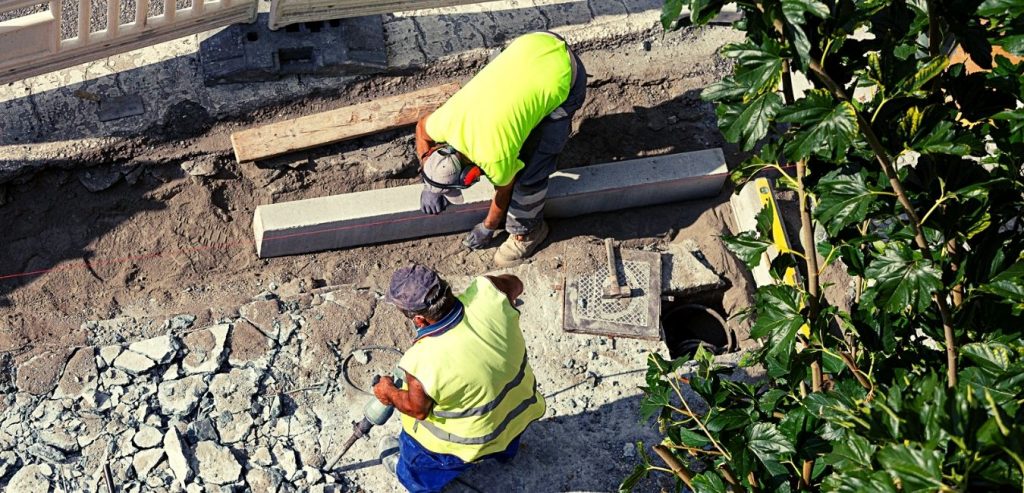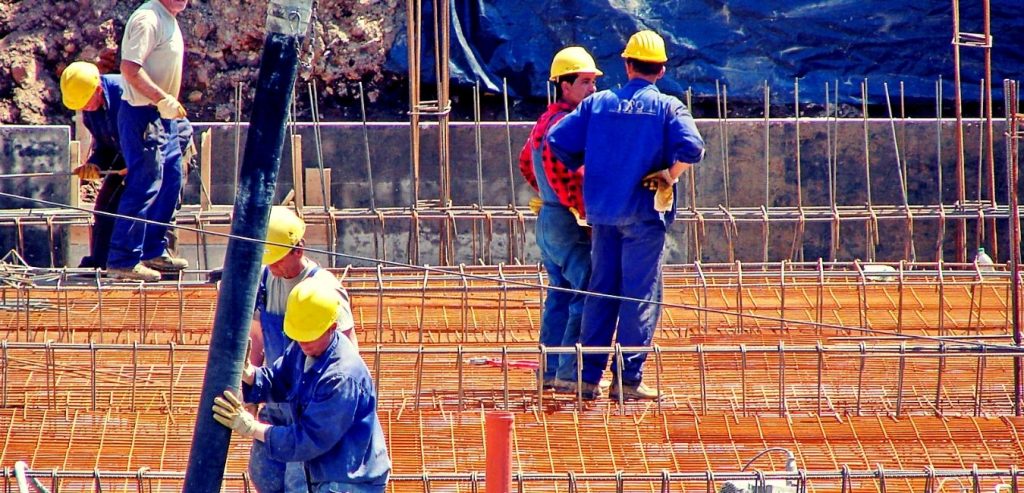Most general contractors tend to outsource a significant portion of the project's work from subcontractors. This may be because they cannot work on the job or want it done by another party. The construction industry is about building lasting relationships, and many General Contractors and Subcontractors work together for years when there is a good working relationship between them.
However, before forming lasting relationships with subcontractors, a General Contractor needs to find good subcontractors. Knowing where to find subcontractors and how to hire them helps contractors stay on track and deliver projects on time and within budget. This article has compiled all the competent places you can find reliable subcontractors for your project.
Table of Contents
Where to find subcontractors?
As much as General contractors risk breaking contract terms if they cannot find reliable labor, it does not mean that they should hire any subcontractor. Working with unqualified subcontractors leads to schedule overruns, reworks, and poor work quality. However, with the realities of the present-day industry, it should not be hard to find quality subcontractors. Below are some of the methods you can employ to find the best subcontractors for your project.
1. Ask around
The most apparent strategy you should employ is asking for references from your friends and neighbors. They can direct you to subcontractors working on projects in your locality. When asking around, ensure you ask reliable people. This is because sometimes General Contractors are secretive with their list of subcontractors depending on whether the person asking is competition. You can approach other industry experts such as architects, structural engineers, and quantity surveyors. Unlike the general contractors, they also have links to subcontractors and do not have a conflict of interest.
2. Trade organizations
Trade organizations are essential in finding subcontractors, especially in new geographical locations. Say you are acquainted with subcontractors in your local area, but what happens when you land a project in a new place? Trade organizations come into play and help you find and maintain new subcontractors in these locations. General contractors and project managers find subcontractors in trade organizations such as Building Connected and Associated General Contractors of America (AGC).
In these trade organizations, a General Contractor puts out a Request for Proposal with all the essential project details such as the scope of work, required skill set, and project timeline. As a general contractor on these sites, do not pick up the first proposal that lands on your lap but rather do your due diligence and compare at least three options.
3. Use these websites
You can utilize website listings to find subs for your project. Nowadays, contractors no longer depend on word-of-mouth referrals as much as they used to. They have their portfolios listed on competitive websites, making it easy to find them. Some of these websites are:
Construction Connect
Construction Connect is one of the most reliable websites for finding construction-related personnel. Construction Connect buys many construction-related companies like CMD, Bid Clerk, iSqFt, and many others, and this gives them a vast database of contractors, clients, and subcontractors.
Home Advisor
This is the best site to get leads, especially for residential projects. They advertise both clients and contractors looking for work. Their online marketing and TV advertisements have made them a household name.
The Blue Book
This site is exclusively for General Contractors looking for subcontractors. They have different payment tiers from $150 to $800 monthly: the higher your subscription, the more extensive access to subcontractors you'll have. Contractors send email invitations to subcontractors and mass invite them to bid for a project. The General Contractor will then settle for the most competitive one for the project.
Dodge
Dodge has been around for over a hundred years and has a lot of Gross Domestic Product reporting. They have many leads on jobs and contractors from their database on past projects, making it easy for economists to make market projections, and the government also trusts them.

What to look for in a subcontractor?
Even if the subcontractor was recommended to you by a friend or close relative, it is paramount to perform some background checks and establish the contractor's credentials. You need to check the company's name, address, license, and insurance coverage. Ensure that your subcontractor has updated policy coverage. You also need to check whether the subcontractor has pending legal actions against them or whether they had lawsuits in the past.
It would help if you also investigated the subcontractor's work habits. Some subcontractors are generalists, whereas others are specialists. It would be best if you saw your subcontractor's work firsthand. As you assess their work, look for similarities with your project, quality of materials, craft, and client satisfaction.
You also need to check how many projects the subcontractor will be working on simultaneously. Another factor to consider is similar projects the subcontractor has worked on as yours and their completion time. Some small cues indicate professionalism or the lack thereof. For instance, does the subcontractor dodge phone calls, and if they miss calls, do they return them promptly? Do they keep appointment and meeting times? Do they adhere to health and safety standards, and do they have competent certifications on quality assurance? These small cues eventually reflect on the quality of work by the subcontractor.
Considering the above factors helps you to properly assess a company's reliability and professionalism for your project. If a subcontractor can satisfy all your criteria above, you can feel confident moving forward with them for your project.

Ten subcontractor hiring tips
As you are planning for your project, choosing the right subcontractors is a critical step. You need to assess the quality of work before agreeing to embark on a project with them. The checklist below compiles the essential factors for consideration in choosing a subcontractor.
1. Start with a call
You first need to compile a list of subcontractors you want to work with. After that, you need to proceed and call them to organize a prequalification process. Having multiple subcontractors on your list is essential as construction methods and timelines vary. In your phone interview, you need to assess whether they have tackled projects your size, whether they have a list of recommendations from previous clients, financial references, and overall experience. This initial phone interview will reveal the availability and reliability of a company. Based on this phone interview, choose about three subcontractors that you will assess through prequalification.
2. Understand their experience
Organize a face-to-face meeting with the subcontractor to gauge their experience. Ask how their work has turned out previously and if they have specialized in the job you want to be done. The subcontractor should be able to answer your questions with ease. However, do not let their personality blind you. You need to do a background check to verify the facts they are giving. Check out state consumer agencies to confirm your subcontractor does not have a history of disputes.
3. Understand their availability and resources
Before entering a contract with a subcontractor, you need to evaluate a wide range of resources. You need to consider money, equipment, machinery, labor and staffing, building materials, technology, and software. You also need to assess their availability to work on the project to avoid unnecessary delays. Most subcontractors blame inadequate resources as the leading cause of failure in a past project. A subcontractor's availability and resource allocation play a critical role in ensuring the contract's goals are met. If a subcontractor has effective resource allocation, they can build a dependable workforce and ensure the project's goals are effectively met.
4. Ask for references (and speak with them)
Now that you have a shortlist and references, put that information to use. Call the references and find out if the contractor completed the project successfully. If possible, ask for the finished product. More importantly, if they have a contact at an ongoing project, visit that project and witness for yourself how the subcontractor performs his tasks. Assess the safety of the site and the organization of the workers. This will be crucial in your decision-making.
5. Make sure they know what they're doing.
Please do not assume that the subcontractor has everything covered and knows what they are doing. You might be surprised to find out they do not have all the necessary equipment for the job. Check to see whether the subcontractor is appropriately insured and has the correct licenses. They should provide the insurer's company name, policy limits, and policy number. Never work with a subcontractor who is not thoroughly insured, as you might end up being liable for accidents that take place on your property.
Safety professionals have done a lot of sensitization on accident prevention programs. While we are aware of these facts, they generally take a backseat during the contract award process. Safety has a significant impact on a project's operating costs. One of the ways of assessing the safety record is evaluating the number of workers with compensation claims filed against the company. The lower the number of claims, the higher the safety record.
6. Have a clear scope of work
Nothing hurts a contractor's reputation more than budget overruns and delays. One way to avoid this from the get-go is to have a clear scope of work. Break the tasks into small chunks and give your subcontractor realistic deadlines for completion. Communicate properly to ensure that they are fully aware of your expectations. There are some places where you might leave a little wiggle room, such as the event of a sick staff or lousy weather.

7. Make sure you have a contract.
Before beginning the work, ensure you secure a comprehensive contract. If the portion of the work involves substantial costs, it is advisable to have a lawyer present. The contract should have a detailed description of the scope of work and material prices. It should also have a payment schedule and projected start and end dates. If any guarantees are applicable, they should also be written and state what is guaranteed and who is responsible for the guarantees. Both parties should sign the contract and acknowledge everything in writing. In the event of cancelling the agreement, the procedure should follow the contract's cancellation clause, and you should have proof supporting the cancellation as the contract is legally binding.
8. Have a process for change orders
Change orders in construction are standard practice, and all parties should acknowledge them in writing. Adjustments happen in contracts, and you should anticipate them. Despite the terms agreed upon terms on the contract, you should adjust your plans when circumstances arise that lead to change orders. Have clear communication and specifications that stipulate how to go about change orders.
9. Outline payment terms clearly.
Payment schedules are critical, and they also speak volumes concerning a contractor's work ethic and financial status. If a sub asks for half the payment upfront, they might have pending economic issues or are afraid you will clear the rest after completing the work. Usually, projects start with a 10% payment at contract signing, three 25% payments evenly spaced throughout the project, and a final 15% payment on project closeout.
10. Have a communication/reporting system
To ensure that everything stays on track, you need to be in constant communication with your subcontractor. One way you can track their progress is by using job tracking tools. This is a good way of seeing their progress without having to micromanage them. If mistakes pop up, it is easy to handle them appropriately. You should be specific in your communication and have a checklist of the tasks you want to accomplish. Use the checklist as a guide in communication to ensure nothing is missed.
Summary
Understanding how to hire a subcontractor is essential because of their impact on your labor costs and profit margins. If you follow the steps above, it will be easy to find a reliable subcontractor. You will foster a good working relationship from the start if you have professional relationships with your subcontractors on site. Stay focused on the skills you need from your subcontractor during the vetting process and evaluate their general experience.

